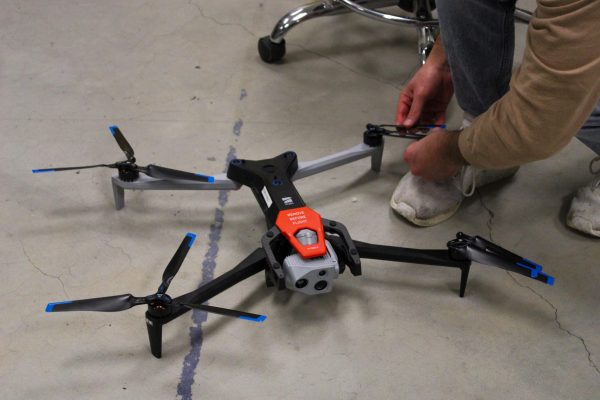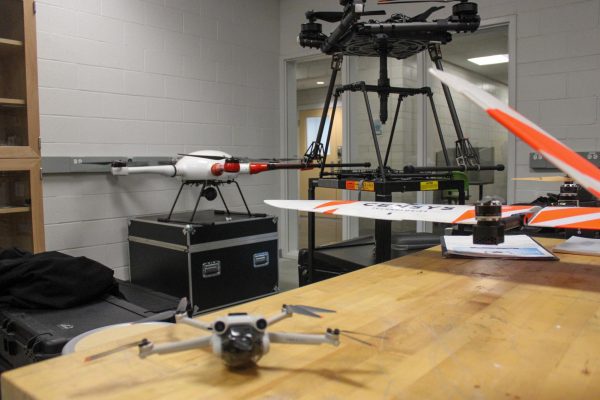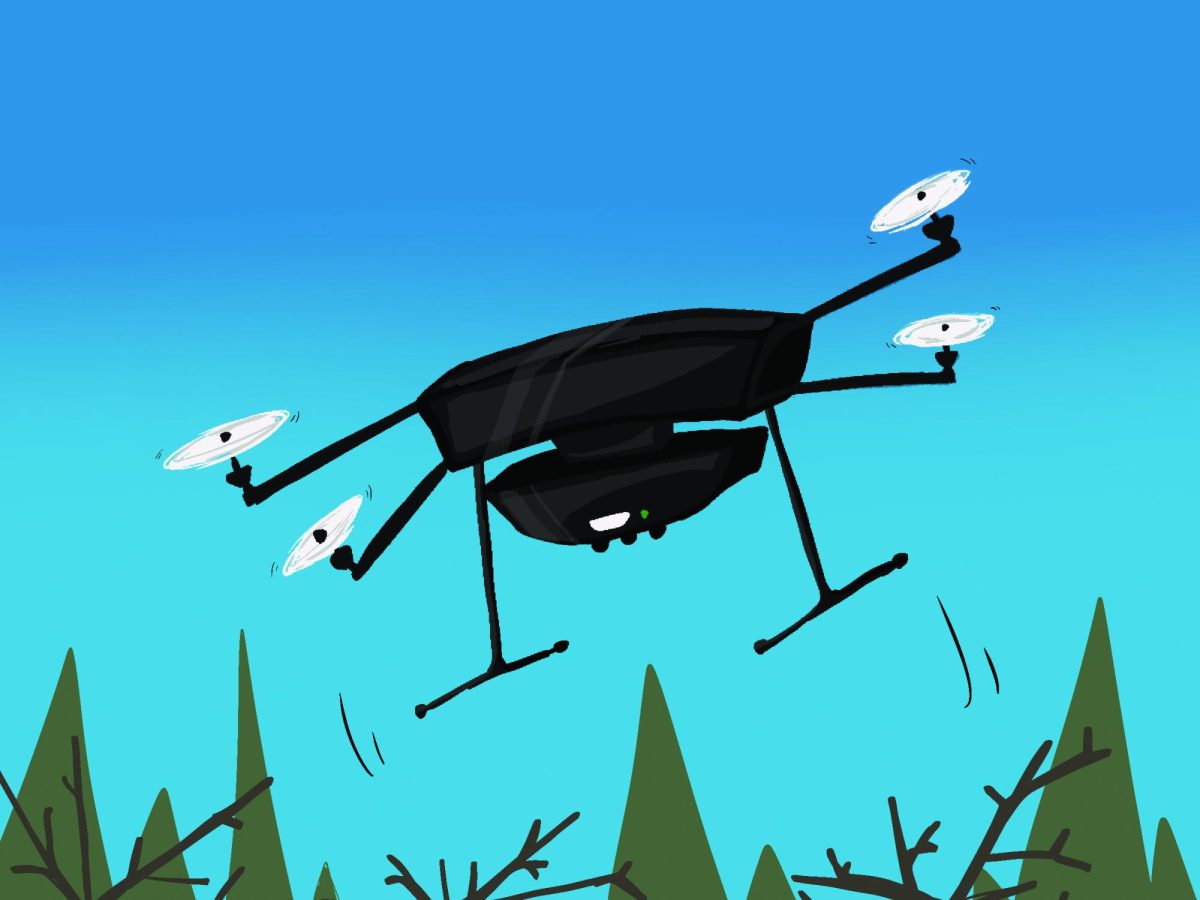While recent mysterious drone sightings in New Jersey and around other parts of the country have caused a frenzy of conspiracy theories and buzz, Kent State’s campus will have its own share of drone sightings that will offer insight to a growing program at the College of Aeronautics and Engineering.
A student research team, led by Jason Lorenzon, assistant professor of the college, has received a specialized Federal Aviation Administration (FAA) waiver for drone research operations. This waiver will allow them to fly drones over people and moving vehicles without further authorization.
The FAA has certain regulations for drone flight, also referred to as “unmanned aircraft system drone flight,” that are outlined by Part 107 guidelines.
Emily Lorenzon, a sophomore aerospace engineering student, is one of the student researchers who was involved in drafting the waiver request.
“We have really big drones at Kent, and then we have really small ones,” she said. “We decided to start really small.”

Lorenzon said the team conducted research to learn how to request the right waiver for their drone program.
“The FAA shows all the submitted waivers that are approved for any operation that goes against Part 107,” Lorenzon explained. “I looked through all those that we wanted, specifically for flying over people and over moving vehicles.”
After finding all the requirements for the specific waiver they wanted, Lorenzon said they just “drafted it up and wished for luck.”
Jaden Lepp, a junior aerospace engineering student, said the team also talked about all of the different safety measures and how they could prove their drones were safe, including adding prop guards and parachutes.
“The main thing was just getting across the steps that would be taken to ensure that, even with a key section of Part 107 waived, we’d be able to operate safely,” he said.
Lepp also said he was interested in figuring out designs or modifications that would create a drone safe for flight over people without the need for a waiver at all. But just having the waiver itself leaves more room for future research, he said.
Lepp explained that avoiding flying over people in projects like flight mapping might pose a challenge.
“When you have that flight-over-people waiver, it means that when you’re testing your algorithms, if you accidentally go over people, you know it’s not a big deal because you have the waiver,” Lepp said.
The waiver opens more opportunities for students in the growing drone program, but it’s not just flying the drones, it’s expanding accessibility and knowledge to all who are curious.

“It’s more showing what they’re capable of, and then applying it where you can,” Reilly Ferrie, a senior aeronautics professional pilot student, said.
Some of the researchers even work on drone workshops that help people get their certificate.
“We get a lot of high school teachers, and they’re interested in starting clubs or drone classes,” Ferrie said. “They come pretty far; the farthest one we had was Cincinnati and Toledo.”
In addition to this, the drone program also works with other departments at Kent State. Specifically, they have worked closely with the geology program to get footage of forests and rocks for additional research.
There are a lot of opportunities that these drones open, and Lepp said students just have to look for them.
“Even outside of the engineering college, there’s a lot of opportunity for other schools to collaborate.”
Ari Collins is a beat reporter. Contact her at [email protected].



